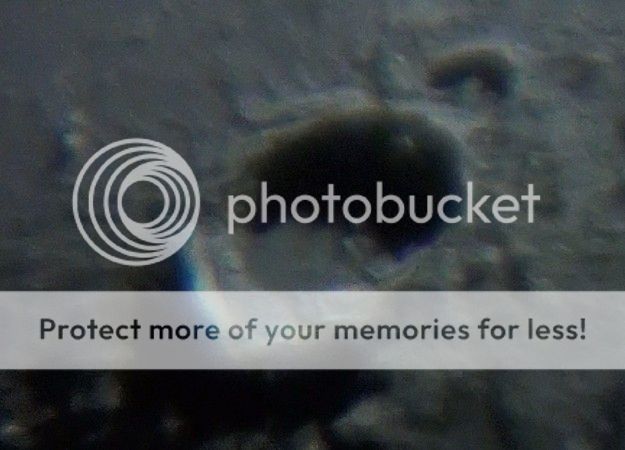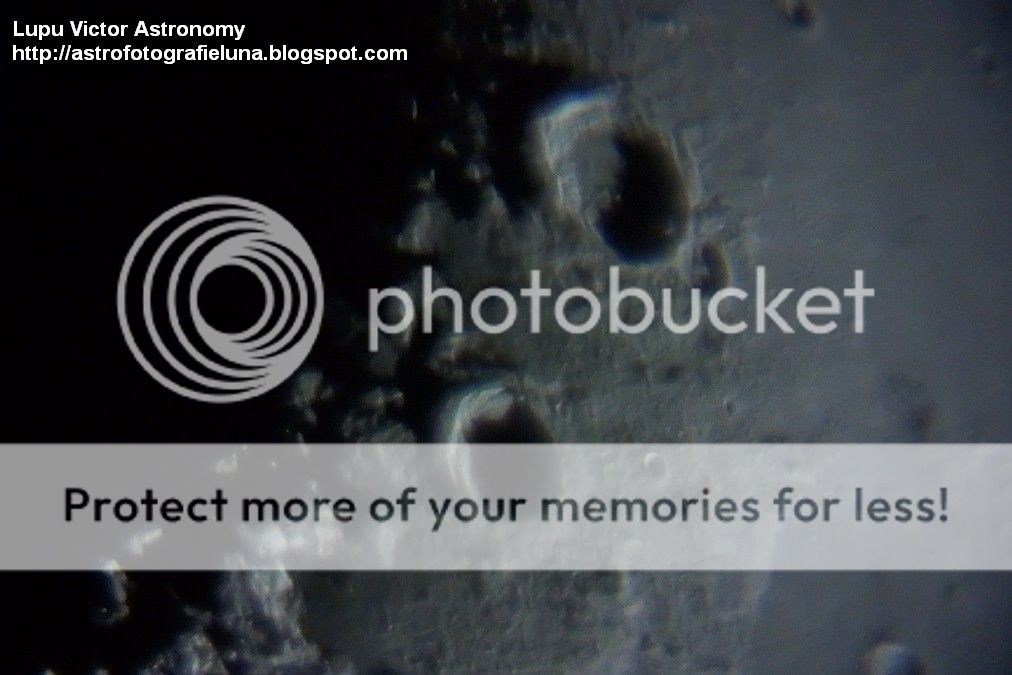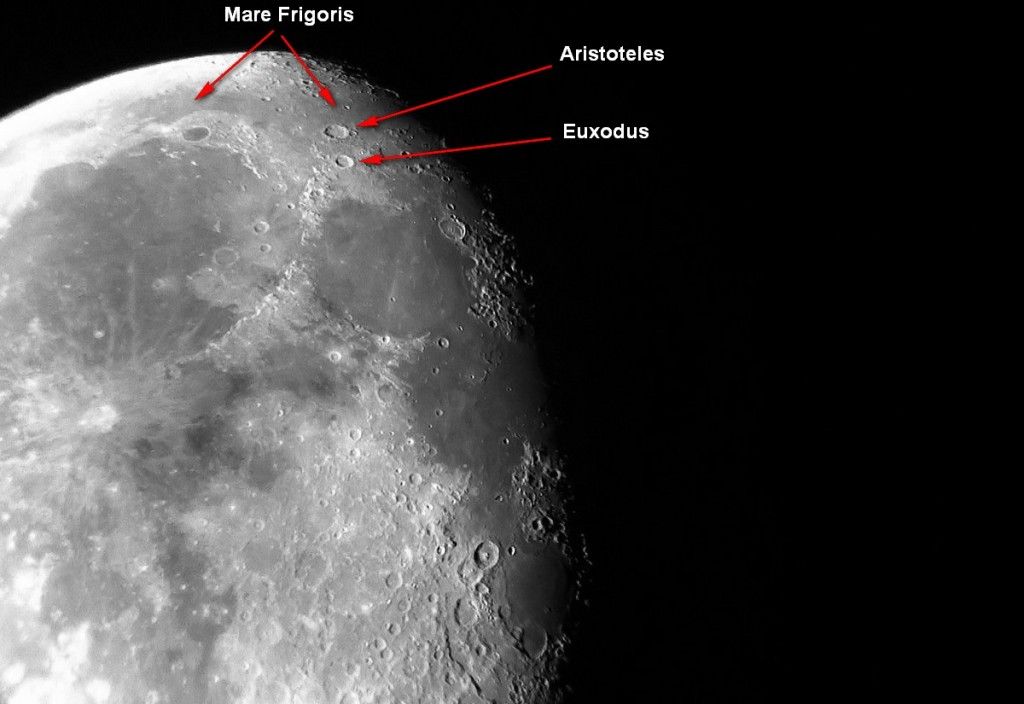Friday, 21 December 2012
Aristotle lunar crater by astronomical telescope 2012
Aristoteles (87 km) and Eudoxus (67 km) forms a prominent duo that can be seen by any telescope. The pair is visible when lit by the sun, even through binoculars, with well-defined shapes of light when fully lit. Of the two, Aristotle is much more impressive, with a slightly polygonal shape and large interior walls, showing some of the largest terracing than any crater on the Moon. Its floor, is relatively good, with two peaks on the floor, in the south. South of Aristotle, the terrain becomes somewhat uneven.
Although Aristoteles (87 km) is bigger than Euxodus (67 km), it is shallow, with a depth of 3.3 km, compared to Euxodus, which is 3.4 km deep.
Aristoteles crater was named after the Greek astronomer and philosopher Aristotle (383-322 BC), the name of the crater was approved in 1935.
Optics: Celestron C8-Newtonian telescope, 20 mm Plössl, 2x barlow
Mount: CG5 (EQ5)
Camera: Sony CX130
Filter: no
Date: 04/27/2012
Location: Baia Mare, Romania
Processing: video captures, FastStone Image Viewer
Above and below: Date: 20/07/2011.
IMAGES AND VIDEOS
About me
(8)
Astronomical Phylosophy
(5)
Astronomy Labels
(1)
Astronomy terms
(5)
Craters-Reinhold and Lansberg
(2)
Craters-Santbech
(5)
DSLR Hyperion pictures
(4)
DSLR astronomy pictures
(4)
DSLR telescope pictures
(21)
Occultations
(5)
Rima Ariadaeus
(4)
Rupes Altai
(10)
The colours of the Moon
(7)
Things about the Moon
(9)
Weird sightings
(8)




 Friday, December 21, 2012
Friday, December 21, 2012
 Unknown
Unknown










 Posted in:
Posted in: 


0 comments:
Post a Comment